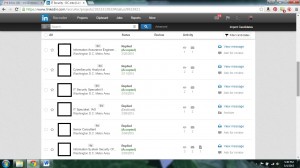Learn about new platforms and methods for identifying website visitors, retargeting and automating customer acquisition campaigns.

As B2B buying shifts increasingly online, companies face a growing challenge: identifying and engaging with potential customers who visit their websites. Visitor identification techniques have evolved, and businesses must use and leverage the right tools to improve their marketing and sales processes.
The traditional methods of identifying site visitors
Over the years, B2B sellers have had three ways to identify visitors:
- Motivate them to fill out a web form, giving up their contact information and perhaps other information about their needs and interests in exchange for some incentive, like a valuable piece of content.
- Pop up a chatbot or a live operator to inquire about what they are looking for and invite them to provide their contact information in the box.
- Identify their IP address and, if they are using a corporate browser, collect at least the name of their company.
None of these methods is perfect, but if used together, some visitors could be identified for marketing follow-up. For years, these approaches allowed marketers to start a conversation with site visitors. But these days, things have changed, some for better and some for worse.
On the worse side, IP addresses have become less accessible and less valuable for several reasons. First, work-from-home arrangements meant that millions of business people were using their home browsers, remaining anonymous. Second, increased privacy concerns drove data providers to avoid offering business information at the personally identifiable (PI) contact level without consent.
New and advanced solutions for visitor identification
Still, there’s plenty of positives out there. These same data providers offer marketers an opportunity to connect with their otherwise anonymous site visitors through such methods as retargeting at the account level, via display or search campaigns, on the assumption that if one company member is researching at your site, it’s a good idea to contact everyone we know at the company to build awareness and preference.
Bombora, for example, offers retargeting combined with enrichment of the data in your CDP, which improves campaign effectiveness measurement through data match-back. Their Audience Insights platform adds demographic and firmographic data to your visitors, as well as an assessment of the account’s intent levels compared to other companies in the category.
Stirista has built tools that link business contacts to their consumer records, allowing marketers to gain deeper customer insight and access to their hashed (encrypted) email addresses. Stirista will run an outbound campaign for you via email, display or CTV to further the conversation and, one hopes, secure opt-in permission for direct conversation. Blaine Britten, SVP of data strategy, says Stirista experiences a 30% to 40% conversion rate from site visitor to retargetable contact.
New platforms designed specifically for visitor identification are entering the martech space. Let’s look at Warmly.ai, which combines licensed data with a marketing platform. The company says this lets clients identify up to 60% of visitors at the company level and 15% at the contact level, depending on the industry. (SaaS marketers would experience higher rates, and medical devices, lower rates.)
One key to Warmly’s popularity is its ease of onboarding. New clients follow a process to tag their sites, identify their account-level ICPs and target contact-level personas, and then connect their CRMs with the Warmly platform. Alan Zhao, Warmly’s co-founder and head of marketing, says it takes just a few hours, and users say they see results in mere days.
Clients can receive reports and follow up on their own, but about half choose to let Warmly run the outbound campaigns, using email, LinkedIn and AI chat. Campaign messaging and cadence are constantly tested for continuous improvement. Zhao says he’s confident that Warmly will eventually get the client use rate up to 80%.
Warmly licenses data from everyone you can think of — Bombora, Open AI, 6Sense, People Data Labs, Clearbit, Seamless AI, ZoomInfo and Apollo.io.
“Our objective was to automate as much of the business development process as we can, to let human BDRs devote their time and skills to what machines don’t do well, like strategy and relationship building,” Zhao says.
The future of B2B visitor identification
Let’s keep an eye on such welcome developments in the world of website visitor identification, one of the most productive and low-cost tools for B2B customer acquisition. One thing to watch out for as you consider solutions: Be sure you clarify whether any given feature is offered at the account level or the contact level. There’s a lot of variety out there.
The post New ways to identify B2B website visitors beyond the IP address appeared first on MarTech.
(6)
Report Post






